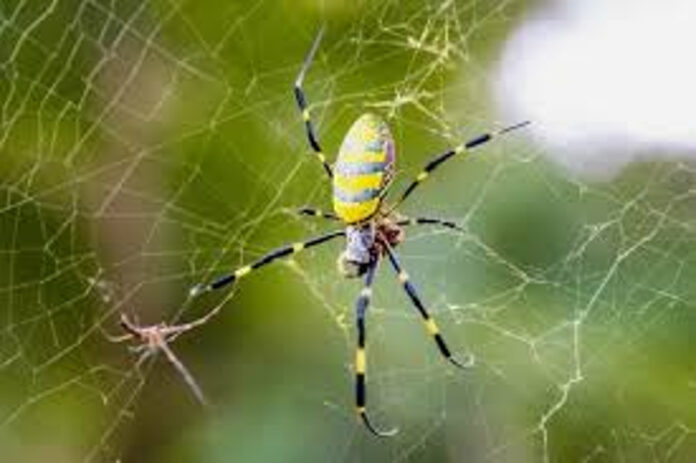The Japanese Flying Venomous Joro Spider Is Anticipated To Spread Across The U.S.
Tuesday, June 11, 2024, 5:30 P.M. ET. By Ryan Metz: Englebrook Independent News,
MANHATTAN, NY.- In recent months, an invasive arachnid species commonly known as the Joro spider (Trichonephila clavata) has been making headlines across the United States as sightings of these striking arachnids increase in number and frequency.
Originally native to East Asia, particularly Japan, these spiders have been rapidly expanding their territory, causing concerns among researchers and residents alike.
Characterized by their distinctive yellow and black markings and large, orb-shaped webs, the Joro spiders have been spotted in various states, including Georgia, South Carolina, North Carolina, and Alabama. While they are not considered aggressive towards humans, their presence has led to some apprehension due to their size and the potential ecological impact of their invasion.
According to experts, the Joro spider’s rapid spread can be attributed to a combination of factors, including favorable environmental conditions and accidental human transport. The species is known to thrive in a variety of habitats, from forests to urban areas, and their ability to reproduce quickly contributes to their success in colonizing new territories.
Efforts to monitor and manage the Joro spider population are already underway, with researchers conducting studies to better understand their behavior and potential impact on local ecosystems. However, the sheer number of sightings suggests that controlling their spread may prove challenging. Residents are advised to exercise caution when encountering these spiders and to report any sightings to local authorities or relevant organizations.
While the long-term consequences of the Joro spider invasion remain uncertain, proactive measures are essential to mitigate any potential risks to native species and ecosystems.
As the summer months are now upon us, and the Joro spiders continue to make their presence known, communities across the United States should remain vigilant, hoping to find effective solutions to this burgeoning arachnid invasion.


